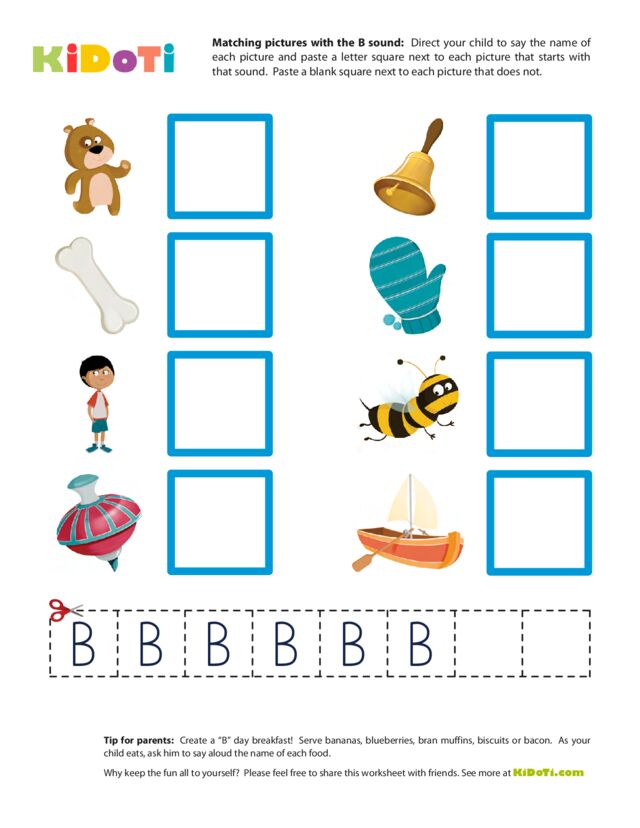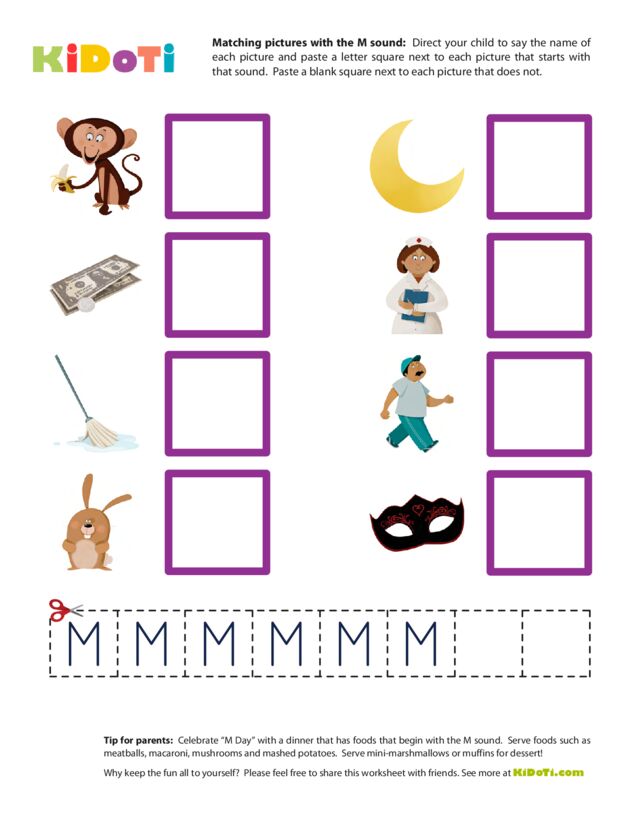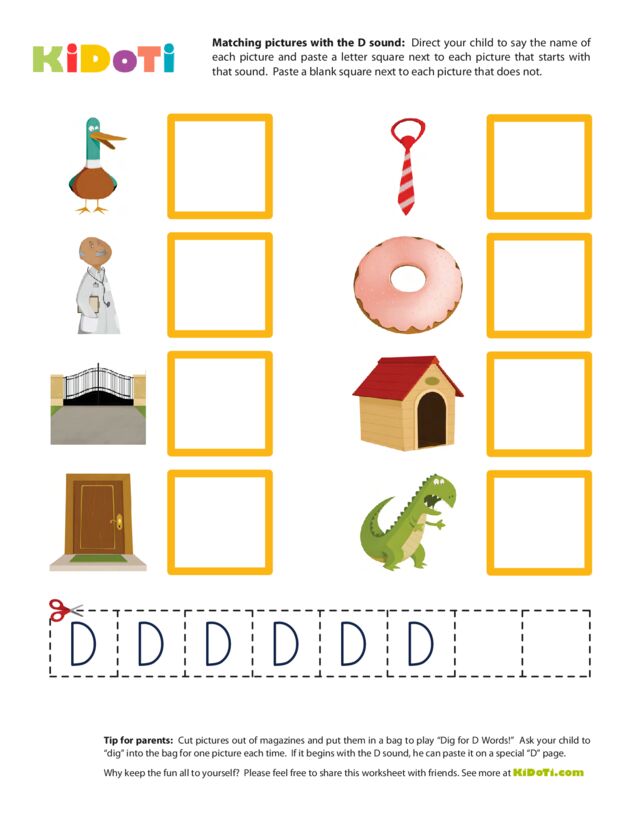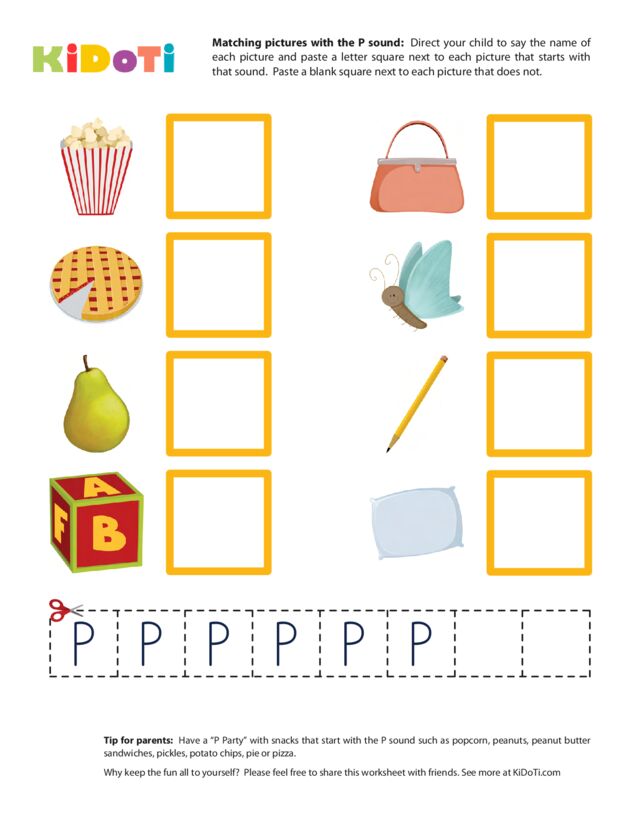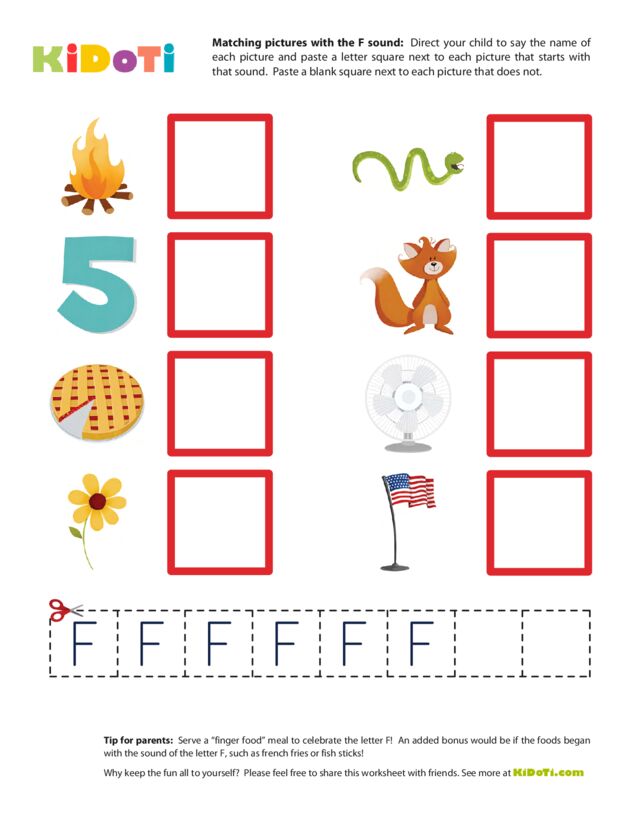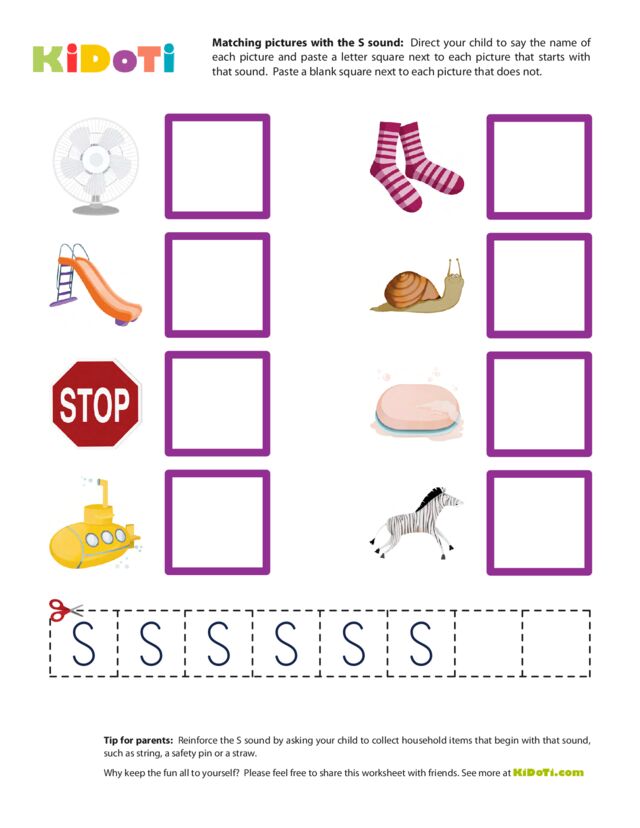Learning the sound each letter makes is an important precursor to both reading and writing. These worksheets will introduce your child to the sound made by each letter and give your child important practice identifying words that start with the sound made by each letter.
Why learning the letter sounds is important
Not only are there 26 letters in the alphabet, but some letters (such as the letters C, G, S and all the vowels) make more than one sound. Once your child is aware of the sound(s) each letter makes, he will be able to start matching each letter he sees with the sound(s) that letter makes. This is an important precursor to more advanced activities like writing and reading, since children need to be able to match printed letters and their sounds to succeed in both of those activities.
Tips for using the letter sounds worksheets
Letter sounds worksheets are a great way for your child to practice matching printed letters with the sound(s) they make. As your child looks at the 8 pictures on each letter sounds worksheet, he should say the name of each picture aloud so he can hear the beginning sound in each word. In this way, the more he reviews the worksheet, the more practice he will get hearing the featured letter’s sound. Also, the letter sounds worksheets on this page contain only as many letters as there are pictures on the page that begin with the correct sound, further positioning your child for success in completing these worksheets.
- Before beginning any of the letter sounds worksheets, take time to review the particular letter and introduce your child to the sound it makes. A helpful activity can be saying some words (real or made-up) that begin with the featured letter’s sound. Ask your child to add to your list, to ensure he fully understands the correct sound made by that letter.
- When your child is able to suggest words that begin with the correct letter sound, cut out the letter squares and the blank squares at the bottom of the letter sounds worksheet – or supervise your child while he practices his cutting skills and cuts out the squares. When all the letters and blank squares are cut out, you can spread them on the table in front of your child so he can easily glance down and be reminded of which letter’s sound he is trying to match.
- Together with your child, look at the pictures on the worksheet page and ask your child to point to each picture. While he points, have him say aloud the name of the picture or, if he cannot identify the picture, you can say aloud the name of the picture and ask your child to repeat the name after you. Each time your child finds a picture that begins with the sound made by the letter he cut out, help him paste the letter in the box next to the picture. If your child decides that a picture does not start with the sound of the featured letter, ask him to paste a blank square in the box next to the picture.
- As your child completes the letter sounds worksheet, if he makes an incorrect decision or is unsure about an answer, suggest that he just place the letter square or blank square next to the picture, as opposed to pasting it in the box. That way, he can easily change his answer if he later realizes he made a mistake or is able to use the process of elimination to match a letter or blank square with the corresponding picture. Once your child has correctly placed all the letters and blank pieces in the colored boxes, he can confidently paste them to the page.
